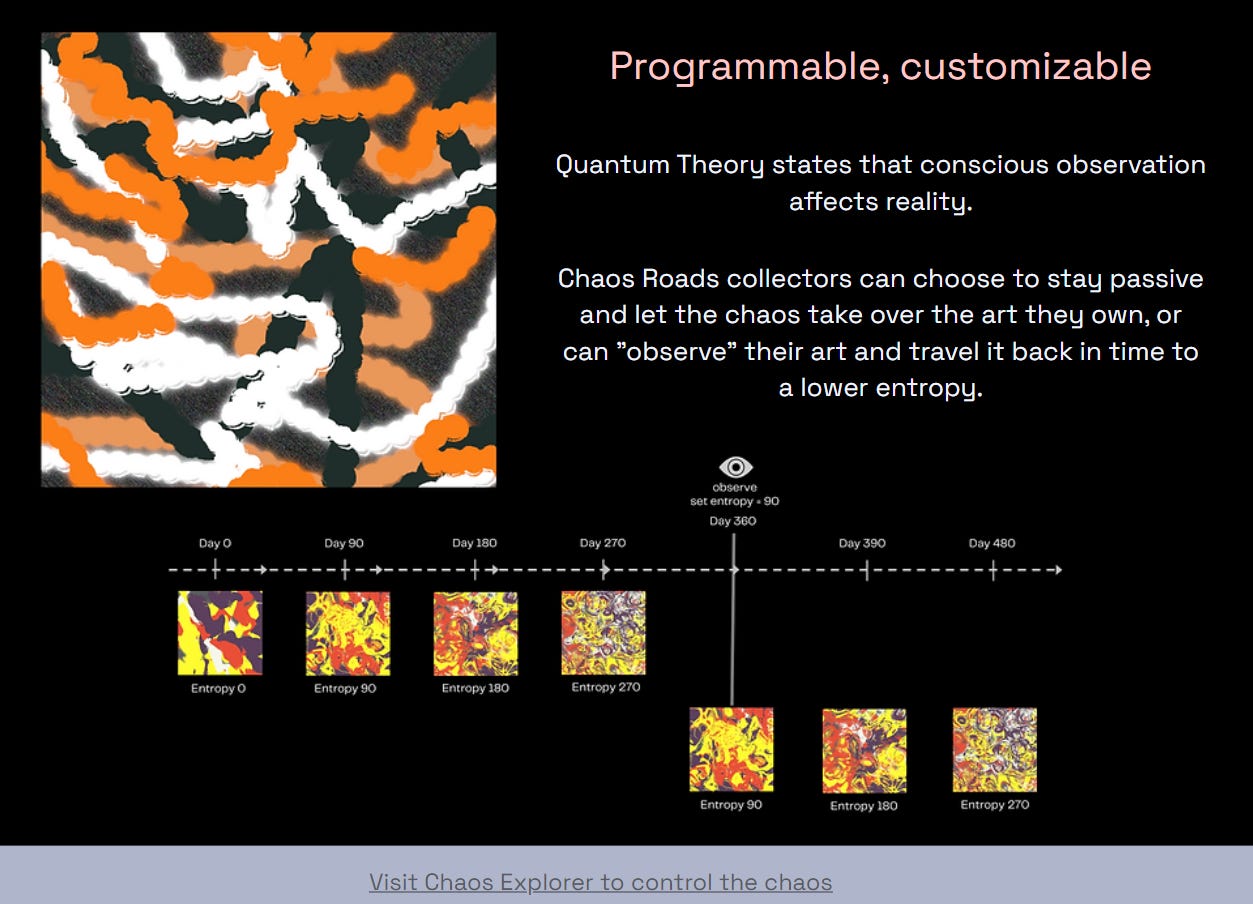Dear Bankless Nation,
Why NFTs, why blockchain-based art?
Despite what the naysayers think, there are things only possible with NFTs on a network like Ethereum.
One of those things? Runtime art.
This field is very nascent, but it's gaining traction, and it's got the makings of something special. Let's get you caught up on the basics here for today's post!
-WMP
Only with NFTs: Runtime Art Explained
When it comes to general computing, the word runtime can mean “the time at or during which a program is run” or “the length of time a program takes to run.”
In the Ethereum ecosystem, runtime art is a new area of exploration. Its art that’s dynamically computed at the level of the smart contract and thus will run, and can be interacted with, for as long as Ethereum runs, i.e. indefinitely.
In this sense, runtime art is the fully onchain version of dynamic blockchain-based art. Such projects use Ethereum as an “always on” computer and rely on things like block data or gas data to evolve their art over time.
I recently wrote about Autonomous Worlds and how the early projects in this field are pioneering fully onchain gaming. In kind, runtime art projects are pioneering fully onchain programmable art as a new medium pointing to new possibilities.
A Few Examples of Runtime Art Projects

🌐 Terraforms
An early epitome of runtime art created by Mathcastles, Terraforms is a generative onchain land art project whose individual NFTs are not only mini paint apps but also parcels in a “Hypercastle” composed across 20 virtual levels.
The unique design of the underlying contract, and how the Hypercastle is literally output from the code itself, means this may be the only pre-2022 Ethereum metaverse project left standing 100s or even 1,000s of years from now.
“The art is the contract and comes off the contract,” as Terraforms co-creator 113 has previously explained. This dynamic also notably offers open interoperability, meaning Terraforms can serve as a base layer for metaverse experiments for a very long time to come.
🦠 Mutant Garden Seeder

Mutant Garden Seeder, a collection by artist Harm van den Dorpel, is another fascinating example of runtime art.
The project consists of 512 generative NFTs, each of which is a unique “mutant” that evolves. The evolution of these mutants is determined by Ethereum block data, with the transaction hashes of their birth blocks serving as seeds for facilitating attribute changes over time.
In other words, the mutation of these onchain creatures stems from their seed block hashes being compared against the current block hash of Ethereum, and by Ethereum, in perpetuity. The mutation frequency varies for each mutant, with some changing every day and others changing only once every ~5 months.
🛣 Chaos Roads

Chaos Roads is a newer runtime art collection by Chainleft, and it goes all-in on the concept of making art that’s only possible with a blockchain like Ethereum. The series presents multiple art forms within each NFT — a painting, a poem, and music — and all are constantly produced and evolving courtesy of the Ethereum Virtual Machine’s ceaseless work.
Notably, this “always on” approach combined with the project’s unique contract design lets holders return their pieces’ art to previous states whenever they please forevermore. This is an interesting foil to digital art in the mainstream, much of which lives ephemerally online before being lost to time forever. Onchain provides way more robust availability and programmability guarantees here, and it’s very powerful as such.
The Big Picture
Turns out there are, in fact, things only creatively possible through the use of blockchain tech. Runtime art is one of them.
And just like Autonomous Worlds, the field of runtime art is basically brand new. Pioneering projects like the previous examples have only just begun to chart out the possibilities here. Expect to see many more related experiments and innovations going forward!
Yet even as nascent as it is, runtime art’s already got a lot of crypto’s dreamers dreaming like never before. Don’t fade the creatives here, I say.
